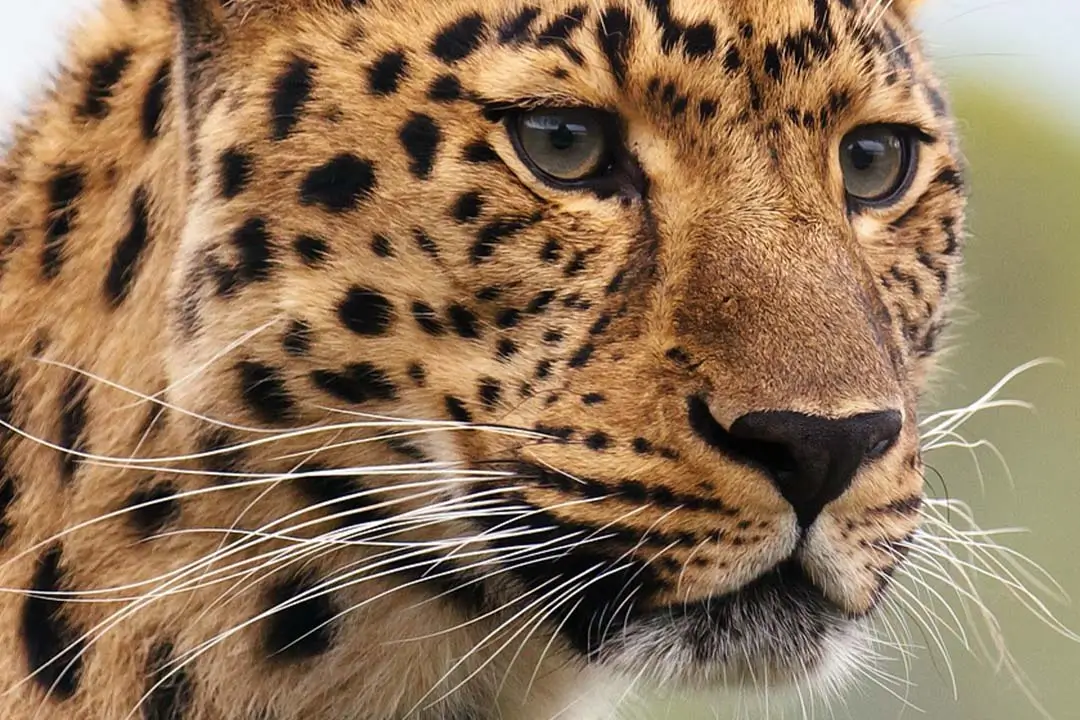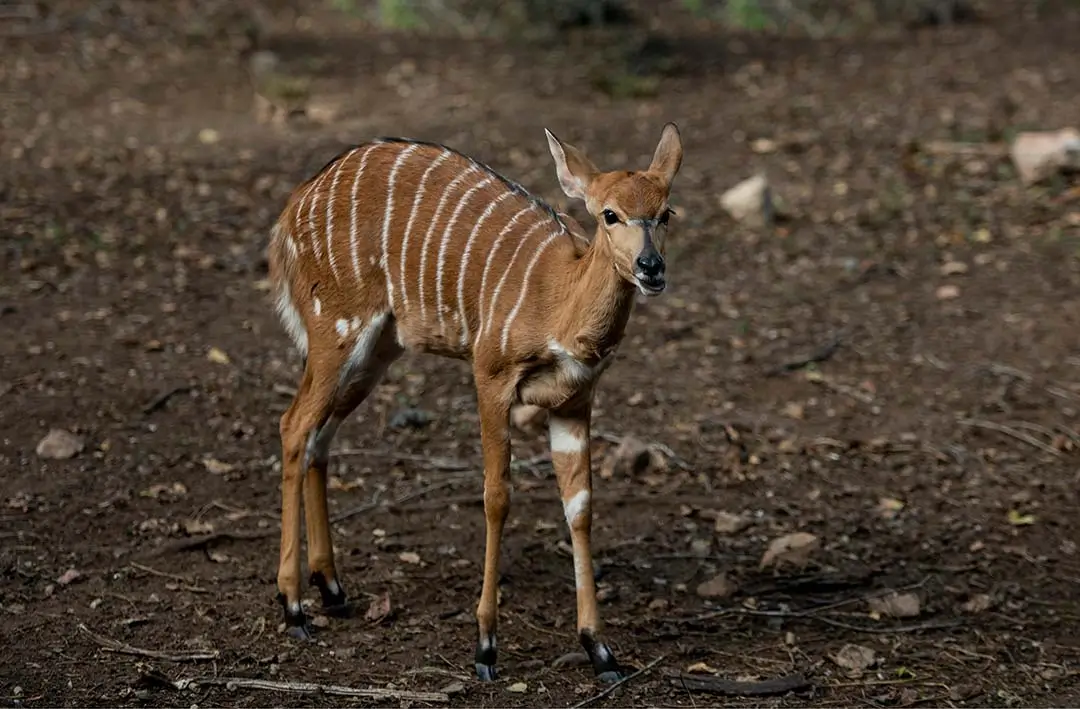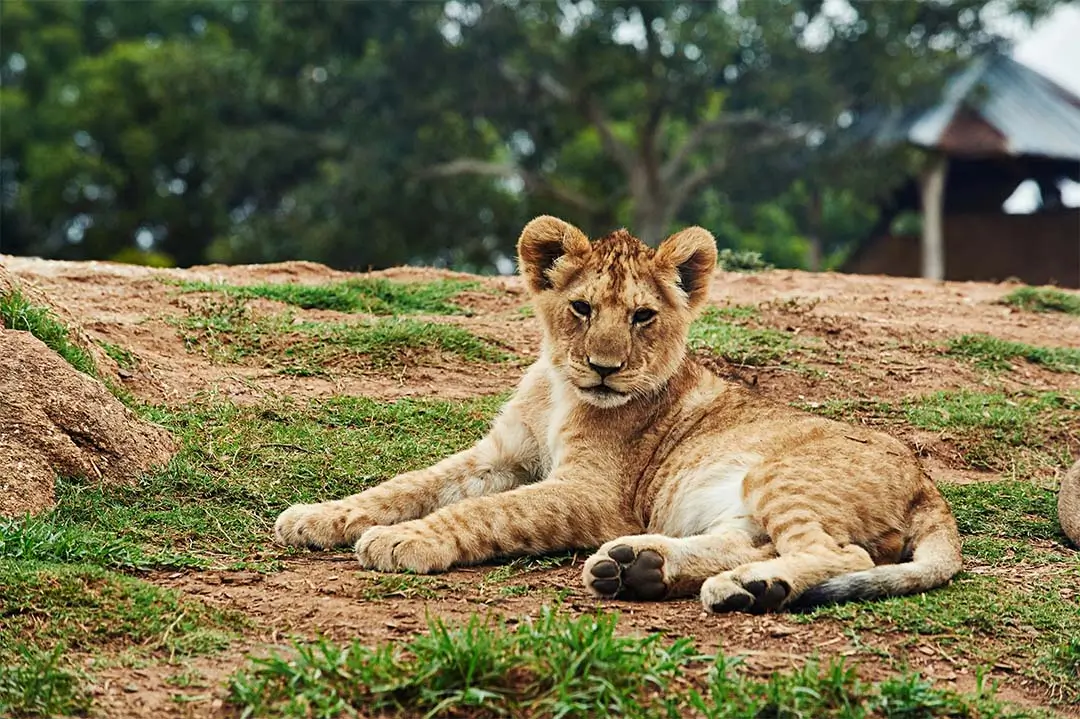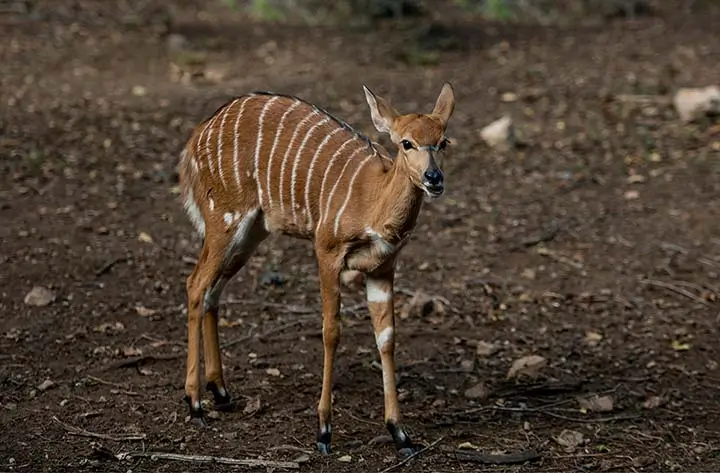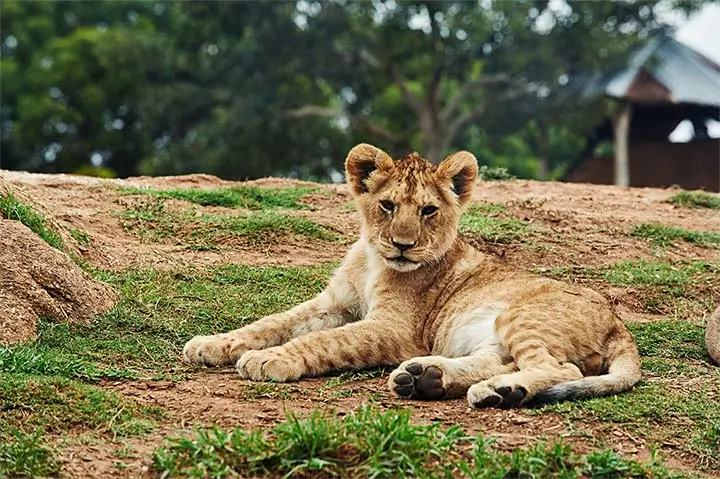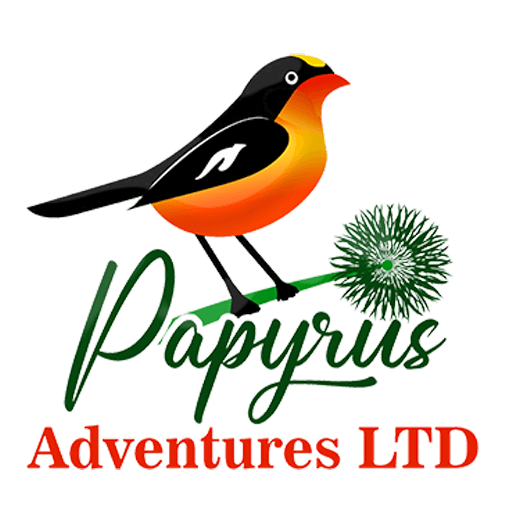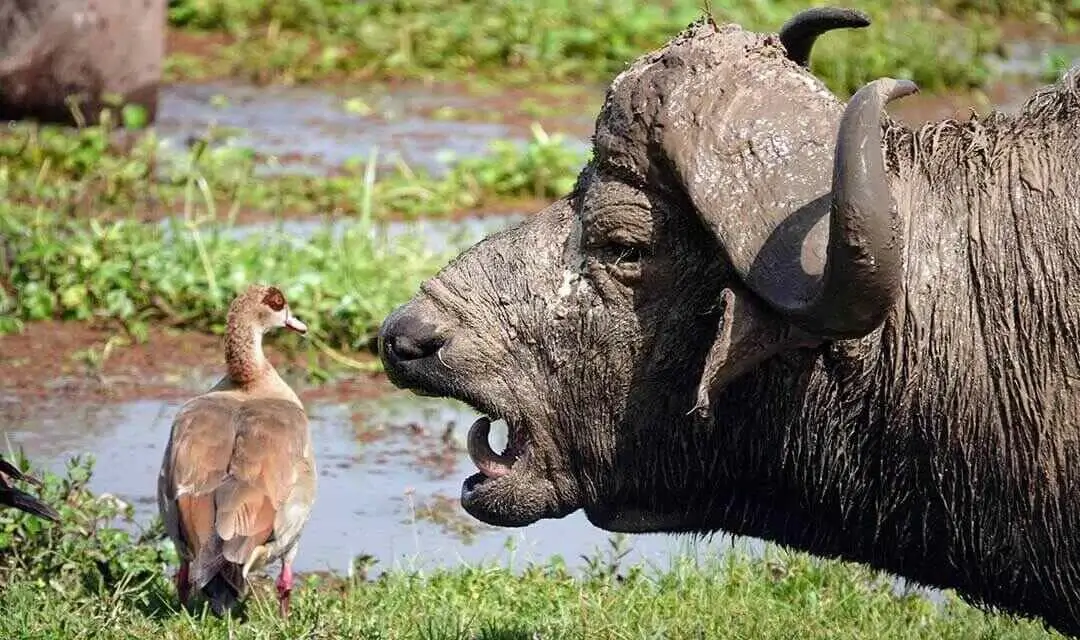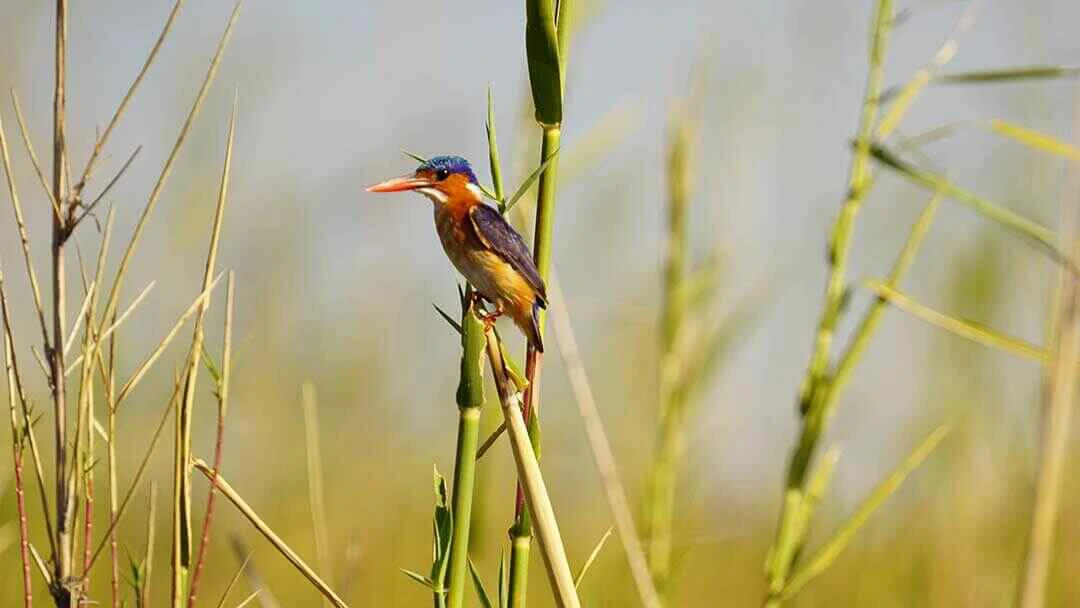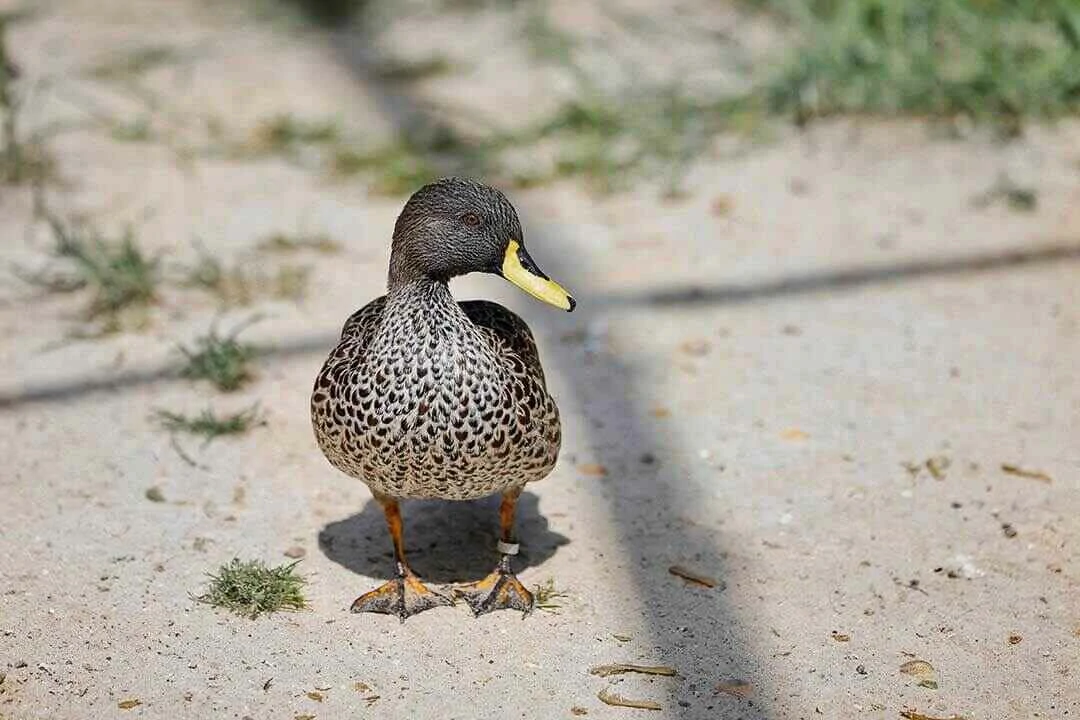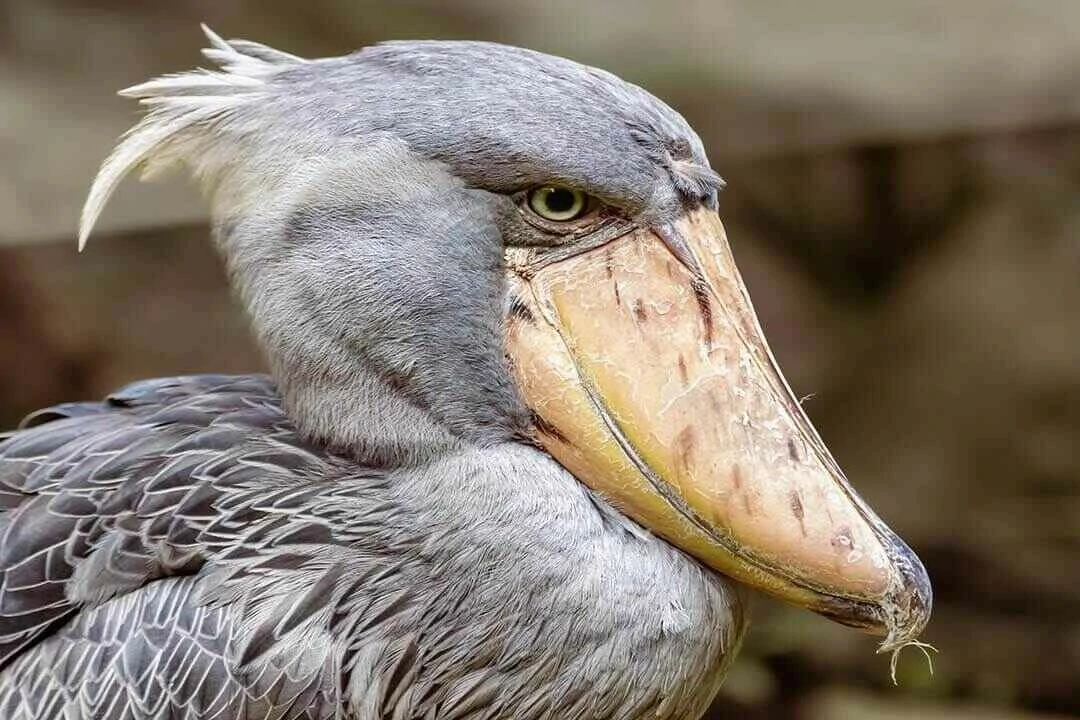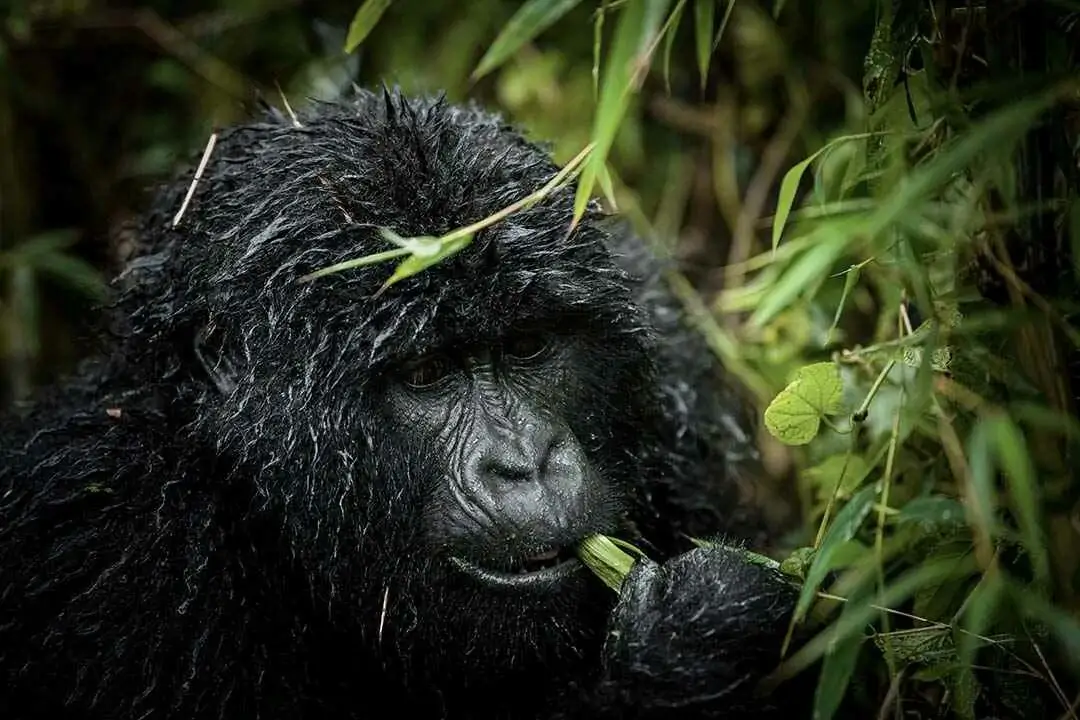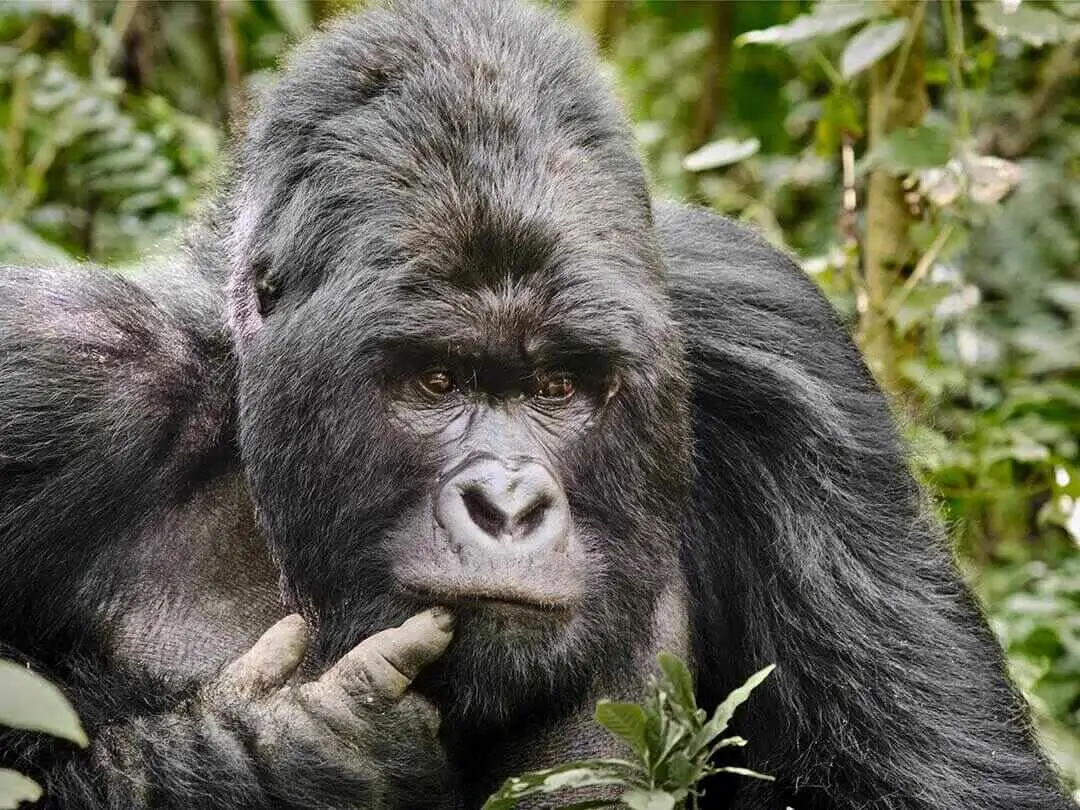Wildlife in Maiko National Park

Leopard
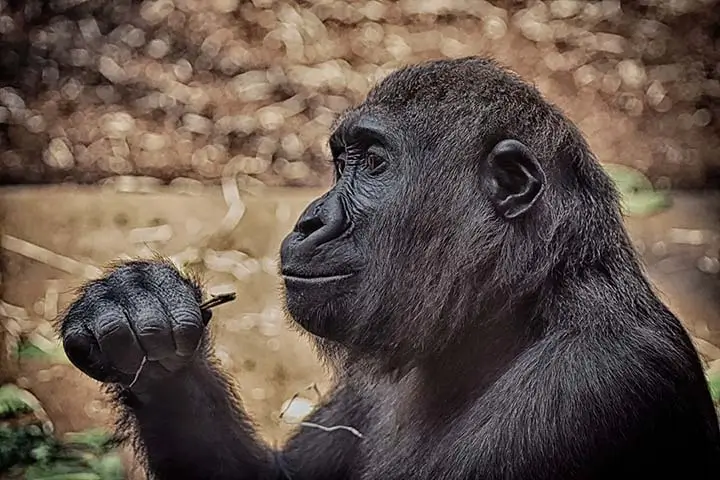
Lowland Gorilla
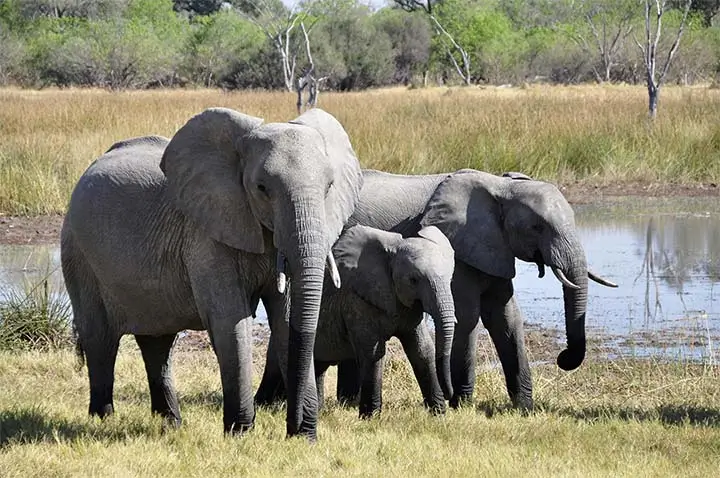
Elephants
Maiko National Park is part of a network of 7 national parks located in the Democratic Republic of the Congo. Maiko National Park was created in 1970. It started as a hunting reserve before it was gazetted in 1949 by the Belgian Colonial Government. The park was gazetted primarily to protect a block of swamp forest. Maiko National Park, reserve in eastern Democratic Republic of the Congo, about intermediate from Bukavu, in the great Western Rift Valley just south of Lake Kivu, at the Rwandan border, and Kisangani, about 320 miles (515 km) to the northwest, at the great westward bend of the Congo River.
It is located in the Ituri forest and the provinces of North Kivu and Maniema. The park's 4,180-square-mile (10,830-square-kilometre) expanse spans the Oso River and extends north to the Lindi River. Maïko Park is a hilly and difficult to access topography made up of a block of rain forest quite different from that of Salonga. It is a semi-mountainous forest with an average altitude of 1,200 meters.
Dense equatorial forest characterizes the park. It is home to three of the most spectacular endemic species in the country: the extremely rare okapi, lowland gorillas and the famous Congolese peacock found only at this location in the country. Other Forest-dwellers include elephants, leopards, light-faced chimpanzees and buffaloes. Maiko National Park has not been developed for visitors. Rebel activities are a threat to the park. The park has been adversely affected by civil strife that began in the late 1990s and continued into the 21st century.
Despite all these threats there is hope because international wildlife organizations like Wildlife Conservation Society, the ICCN, WCS and WWF have supported the park at different points in time. Maiko National Park is one of the best places to learn about chimpanzee conservation. The park is managed by the Institut Congolais pour la Conservation de la Nature (ICCN) which, despite the absence of rangers and facilities, is responsible for entry permits. ICCN has control over the park in law, but villages of rebels and native tribes retain control over the park.
Maiko National Park encompasses habitats for numerous key endemic species such as the eastern lowland (Grauer's) gorilla, the okapi, the forest elephant and the Congo peacock. It is also an important watershed and plays an essential role in the sequestration of carbon. In terms of biodiversity, Maiko National Park ranks second in species richness among the 8 biodiversity reserves in the Congo. Maiko National Park is situated in the eastern part of the Democratic Republic of Congo's remote lowland rain forest and dense equatorial rain forest stretch across either side of the Oslo River, giving rise to magnificent jungle landscapes. Most of Maiko National Park comprises untamed blocks of forest, combined with dense waterlogged regions surrounding snaking rivers which is a true paradise for wildlife.
The presence of armed bands in the park is a key threat which needs to be addressed quickly. The armed bands are responsible for the large-scale poaching of elephants, okapis and gorillas. They also encourage and support the illegal exploitation of minerals within the park, and are a constant threat to park staff and visitors. ICCN would like Maiko National Park to become a viable World Heritage Site managed to international standards, with an ecosystem that is protected in the long-term and safeguards the survival of key endemic species and those that are locally threatened by extinction - such as elephants and primates.
Vegetation
Mixed forests dominate the landscape, however large patches of mono dominant Gilbertiodendron dewevrei cover about one third of the park, especially in the north. Regenerating forest and scrubland were recorded on 60% of survey girds in the 1990 exploration. Most of the park is covered by mature evergreen forest. Most of these areas are small. However, large areas of the north and central sectors of the park in particular in the area of the Angumu Massif were occupied by intensive mining operations from about 1938 to 1950. Secondary forests, intermixed with derived grasslands and thickets, today cover these areas. The northern sector of the park covered by this inventory is one of the least disturbed areas with unbroken primary forest covering all but a few small areas. In particular the isolated mid-elevation massifs contain a highly diverse flora with high likelihood of localized endemic species. Botanical surveys yielded important new discoveries.
Flora and fauna in Maiko National Park
Three of the country's spectacular endemic animals occur here: the Eastern Lowland Gorilla, the Okapi, and the Congo Peacock. Also Forest Elephants and Leopards. The park is home to numerous endemic & rare species and, almost certainly, many rare species yet to be documented. However, the presence of former rebels who have made their homes in the park, along with illegal mining and poaching means that many species are threatened with extinction. One example, a new gorilla subspecies first documented in a 2005 survey was not found and believed extinct in a 2010 survey.
Maiko Park contains at least 31 species of large mammals, including a number of species of conservation concern: Eastern chimpanzees, eastern gorilla, okapi, elephant and the owl-faced monkey. The avifauna is poorly known, but likely to be rich. The endemic and vulnerable Congo peacock occurs in the park. Reptiles and amphibians remain totally un-documented.
Topography
The average elevation of the park is about 850 m. Four major rivers drain the park: the Loya and Lindi basins (North Sector), Maiko basin (Central Sector) and the Oso basin (South Sector). Major massifs, including Angumu and Ogombo reach an elevation of 1200 m. Swamp forests and riverine vegetation are highly localized and represent a very low percentage of the area.
Wildlife
A total of 30 species of mammal where recorded that is to say Leopard, Pigs, buffalo, okapi chimpanzee and gorillas. The northern and central sectors of the park contained the majority of apes. Animal densities are highest in areas of high habitat diversity, including the massifs, and areas of regenerating vegetation. Two pig species occur in the Maiko, the giant forest hog and the bush pig. Classed as small ungulates; Duikers, the chevrotain and the pygmy antelope occur in the Maiko National Park. The park is described as one of the most diverse and biologically intact lowland forests in Democratic Republic of Congo.
The park is home to numerous endemic and rare species and, almost certainly, many rare species yet to be documented. The park's wildlife includes the eastern lowland gorillas, okapi, forest elephants, Congo peacock, chimpanzee, bongo, and the Congo Peafowl. There are an estimated 800 gorillas in Maiko National Park making it one of the richest gorilla habitats in Africa. The park's gorillas are an endangered species whose conservation is supported by the Dian Fossey Fund since 2003. However, the presence of former rebels who have made their homes in the park, along with illegal mining and poaching means that many species are threatened with extinction. Maiko National Park is a great destination for those who want to experience a bit of adventure. The park offers a wide range of activities, including kayaking, canoeing, fishing, and more.
Activitives at this park
Wildlife watching
Maiko National Park is home to an impressive variety of wildlife, including gorillas, chimpanzees, elephants, lions, and many more. There are several guided wildlife watching tours available, which will take you into the heart of the park to see these amazing animals in their natural habitats. Maiko national park has un tampered with vegetation cover which harbors a variety of animals such as forest elephants, okapis, Congo peacock, leopards, aquatic genet, eastern chimpanzee and many which are not discovered. The variety of animals in this park make wildlife viewing safari amazing and unforgettable.
Eastern lowland gorilla trekking
Though the national park is located in the remote area of the Democratic Republic of Congo gorilla trekking is the main activity that is being targeted in the area and it's the second habitat after Kahuzi-Biega National Park, there is not a lot of experiences on the success of trekking compared to other gorilla trekking areas in Rwanda and Uganda where the countries are peaceful and have more developed services.
Congo peacock
The Congo peafowl, known as the African peafowl or Mbulu by the Bakôngo, is a species of peafowl native to the Congo Basin. It is one of three extant species of peafowl, the other two being the Indian peafowl and the green peafowl and this bird has been recorded in the Congo basin and adventure travelers can give it a try.
Cultural heritage
The park is also a cultural heritage center, with several indigenous communities living in the surrounding area. These communities have lived in harmony with their natural surroundings for generations, giving visitors a unique insight into their traditional way of life. You can learn everything about maiko, including their customs, history, music and dance. Another thing that makes maiko special is their amazing natural beauty. The park is a veritable oasis of lush rainforest, rolling hills and sparkling rivers. There are several hiking trails and trails that allow you to travel through this stunning landscape. Whether it's a leisurely hike, a challenging hike or a relaxing boat ride, Maiko has something for everyone.
Sights and sounds
Maiko national park is gifted with spectacular views of both the equatorial forests and the river, on sights and sound activity you get to enjoy the unique sounds of birds singing different sweet melodies and sounds of river waters flowing.
Bird Watching
Tourists can do bird watching here with their pair of binoculars. Some bird species found in Maiko National Park include; kingfishers, herons, pitas, sparrows, the Ruwenzori Turaco and more.
How to get to Maiko National Park
Accessibility of Maiko National park in democratic republic of congo is among the hardest thing and the park is hard to be visited as compared to Virunga National Park, Upemba national park and Kahuzi Biega National Park. Maiko national park can be reached from Okapi wildlife reserve, Benin, Goma, or Butembo. Tourists traveling to the park should use four-wheel-drive vehicles, especially during the rainy season.
The park can be visited all year round but the best time is in the drier months of June to August. Accessibility to the park is not easy. Visitors need to prepare for an adventure. There is no airstrip within the park, apart from the UN. The closest international airport is Bangoka international airport in Kisangani, and from there, it's a 515-kilometer drive to the outskirts of the park. There is just one 4x4 road leading from Bafwasende to some small villages within the park. There are some off-piste 4x4 tracks for only the most die-hard over landers in properly-equipped vehicles that can tackle.
Location
Congo - Kinshasa
Size
10885 Square Kilometers
Do You have any Questions?
Our Experts are ready to provide answers
Explore Out Top Tour Ideas
Travel With Us
When considering your next adventure, Papyrus Adventures stands out as the ideal travel companion, offering a comprehensive package of benefits that ensure an unparalleled experience.
Best Price Guaranteed
With our "Best Price Guaranteed" policy, you can rest assured that you are getting the most value for your investment.
Professional Safari Guides
Our commitment to excellence extends to our team of "Professional Safari Guides," who possess extensive knowledge and expertise, ensuring a journey filled with insightful and unforgettable moments.
Locally Owned Company
Papyrus Adventures is deeply rooted in the destinations we explore, allowing us to provide authentic and immersive experiences that showcase the rich cultures and landscapes of each location.
24-7 Customer Support
our "24-7 Customer Support" ensures that your needs are met around the clock, providing peace of mind and a safety net for any unforeseen circumstances.
Frequently Asked Questions About Maiko National Park
The Democratic Republic of the Congo is located on the equator, with one-third north and two-thirds south. Visits to the country are made year-round, but June to August and December to February are the better months when rainfall patterns are light, and March, April and October should be avoided. The climate is hot and humid in the river basins, but cool and dry in the south.
When it comes to accommodation in the park, unfortunately, the national park has no developed facilities, and clients wanting to venture this expedition must ensure they have their own complete camping gear before traveling to Maiko national park. Maiko National Park is a hidden gem in the heart of the Congo that should not be missed. With its incredible diversity of wildlife, rich cultural heritage, stunning natural beauty, and exciting adventure opportunities, Maiko is a destination for everyone. So why not head to Maiko National Park today and experience everything this amazing park has to offer!
